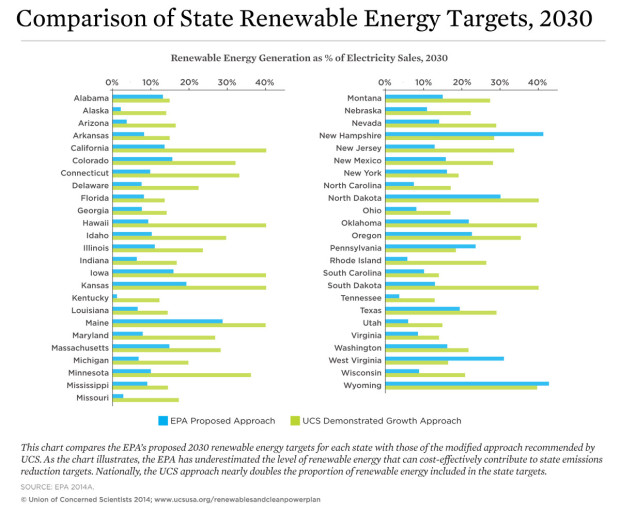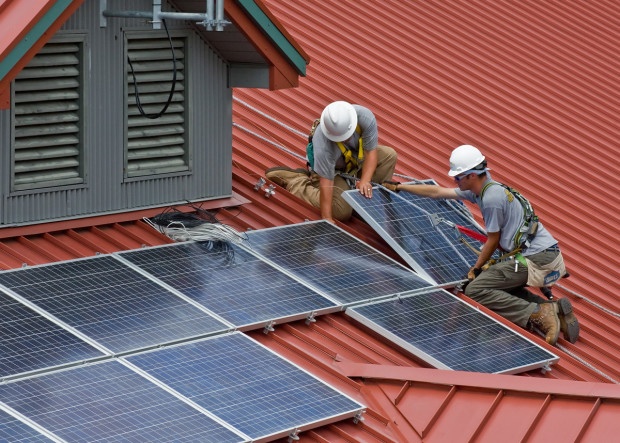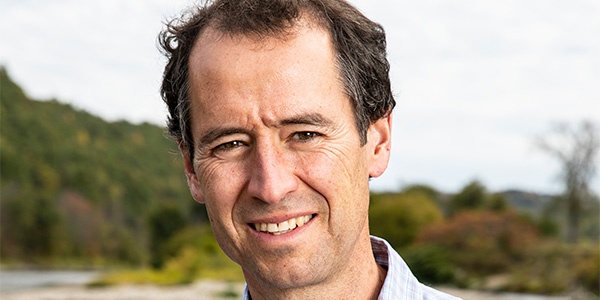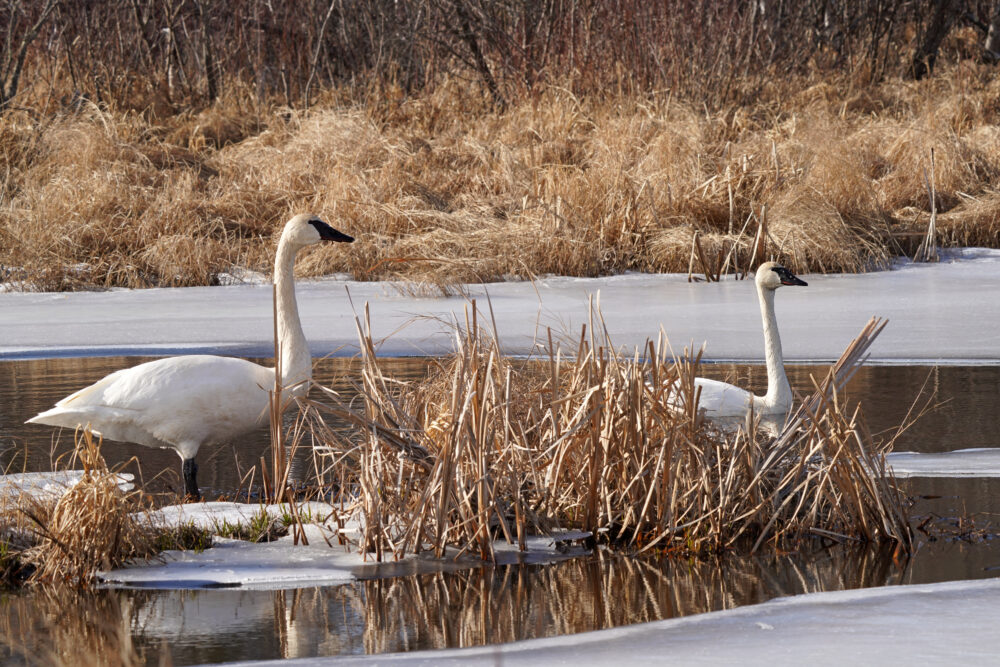We have much more to do and your continued support is needed now more than ever.
Scientists’ Report: Clean Power Plan Can Spur Wildlife-Friendly Renewable Energy
An important new study put forth by the Union of Concerned Scientists further confirms that the U.S. can do even more to speed the transition to clean energy and reduce climate disrupting carbon pollution than the Environmental Protection Agency assumed under its proposed Clean Power Plan. The Clean Power Plan is the Administration’s historic effort to put the first-ever limits on carbon pollution from our electric power sector, which generates 40% of the carbon pollution in America, threatening our climate, wildlife, and communities.
UCS’s study shows that the EPA’s draft standard is very conservative in its estimates of renewable energy potential in the U.S., far undervaluing massive savings that be achieved from clean, wildlife-friendly renewable energy displacing coal and natural gas. UCS calculates that about double the amount of renewables projected by EPA are achievable and that spurring such renewable generation would increase overall carbon reductions from EPA’s current target of 30% to a greater reduction of 40% by 2030.

EPA’s Overly Cautious Methodology
Under the proposed Clean Power Plan, to calculate possible reductions EPA looks at four “building blocks” states could use to reduce carbon pollution: (1) increased efficiency at existing coal plants; (2) more reliance on natural gas; (3) increases in renewables; and (4) increases in energy efficiency.
To calculate the potential reductions from renewables, EPA splits the country into six regions and then uses conservative estimates based on regional averages of existing renewable electricity standards (standards developed by 29 states and the District of Columbia to require a certain amount of renewable generation in that state) to determine the amount of renewable generation possible for states in the six regions.
In essence, EPA’s rule asks states to hit the average regional target already planned, rather than looking at what is possible considering existing and potential renewable energy generation. EPA also fails to include current growing deployment rates and the falling costs of renewables. In fact, EPA’s plan falls short of what the Energy Information Agency projects under business-as-usual.
As a result, EPA’s proposed standard would do significantly less than is possible to push utilities to increase reliance on renewables – the direction our energy future needs to head quickly. The inadequacy of EPA’s proposed standard is illustrated by the fact that in seven states, actual renewable energy generation levels in 2013 exceed the EPA’s renewable energy targets in 2030.
UCS’s plan
UCS’s plan looks to set a national renewable energy growth rate benchmark based on demonstrated growth in the states from 2009 to 2013. It assumes full compliance with current state RES policies, as set by law, which require certain percentages of electricity to come from renewable sources.
Based on that, it sets an expectation for states to achieve, in a manner staggered to allow less developed states to catch up, a 1% annual renewable growth – something many states are already achieving. It asks leading states to push growth to 1.5% per year, which is in line with RES growth rates in leading states.
The result of UCS’s plan shows vast improvements in state benchmarks over EPA’s proposal, as illustrated by the following graph.
As the report states:
If all states met these targets, the nation’s electricity coming from renewable energy in 2020 would double compared with the EPA’s proposal—from 7 percent of total U.S. electricity sales to 14 percent. By 2030, it would result in a 23 percent share of renewable energy, as compared with 12 percent under the current EPA proposal.
A Growing Trend Towards Clean Energy for Wildlife
A more aggressive approach to encouraging renewables makes sense. As the report details, renewable generation is already taking off:
-
Wind capacity increased by 75 percent and solar capacity by 473 percent from 2009 to 2013.
-
The national average cost of wind power has dropped more than 60 percent since 2009, making it competitive with new fossil fuel plants in many regions.
-
Solar photovoltaic system costs fell by about 40 percent from 2008 to 2012, and by another 15 percent in 2013.
-
The trends of improved technologies and reduced costs are expected to continue.
Also, America is about to tap into the massive potential of off-shore wind, which is not looked at by EPA. Off-shore wind can provide enormous amounts of power to the energy hungry eastern seaboard, displacing gas.
With half of species threatened with extinction by climate change and iconic species like moose already dying off in many parts of the United States due to warming trends, we need to do all we can now to build clean renewable energy.

Let’s get it right now. We don’t have a next time.
 Speak up for wildlife: tell the Environmental Protection Agency that you support the ground-breaking limits on carbon pollution from existing power plants!
Speak up for wildlife: tell the Environmental Protection Agency that you support the ground-breaking limits on carbon pollution from existing power plants!





















